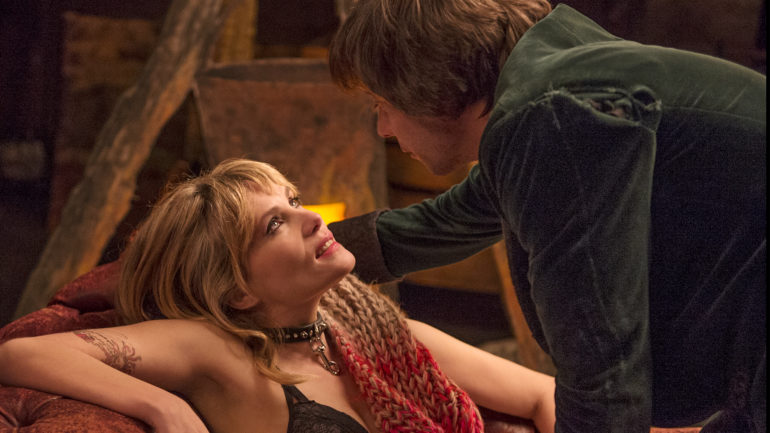Venus in Fur is an unapologetically theatrical two-hander, presented in real-time, and utilising a single, solitary location. Roman Polanski’s psychosexual metadrama gradually reveals itself to the viewer on a number of levels. The film (based in turn on David Ives’ stage adaption of Leopold von Sacher-Masoch’s nineteenth century sadomasochistic novella) improves greatly on the same theatrical aesthetic used in his previous film, the mildly diverting but instantly forgettable Carnage (2011).
Mathieu Amalric plays Thomas, a director auditioning for the female lead in his stage adaption of Sacher-Masoch’s piece. Thomas has spent a long and frustrating day in a run-down Parisian theatre (where the last production was a musical version of Stagecoach), auditioning airheaded ingénues, but none had the talent or gravitas necessary to portray the dominating Vanda. As he is preparing to close shop for the day, an aspiring actor/waitress/whatever named (coincidentally) Vanda (Emmanuelle Seigner) explodes into the theatre like a force of nature. Thomas is initially unimpressed with her résumé (which includes a season at someplace called the “Urinal Theatre”), and dubious of her abilities, in spite of an assurance that she’s “really demure and shit.” Vanda’s assumption that Thomas’ adaption is based on “the Lou Reed song” does nothing to endear her to the director, but Thomas acquiesces to an audition and Vanda slowly begins to prove herself worthy of the part.
Vanda’s increasing agency is realised as she gradually takes control over the lighting, costume and scenery, and she slowly becomes master of the mise-en-scène. As she begins directing the director and the balance of power switches, the subtitles put the non-French speaking viewer at a distinct advantage. They serve to clarify who is speaking and when – Thomas the Director and Vanda the actor, or Severin and his sadistic mistress – as the lines between reality and fiction become increasingly blurred. With such a tight focus on character, the film’s success or failure depends heavily on the abilities of the two performers. Thankfully, Seigner and Almaric (who previously appeared together in Julien Schnabel’s profoundly affecting The Diving Bell and the Butterfly) are sensational. Seigner oozes that particular brand of effortless Gallic sensuality, and Amalric’s gradual descent from cocky, arrogant puppet master to dominated servant is subtly captivating.
Unfortunately, their good work is let down by a nebulous and ineffectual denouement, which seems oddly out of place with the rest of the film. It does, however, give Amalric the chance to pay homage to Donald Pleasance’s unravelling turn in Polanski’s Cul-de-Sac (1969). The impression that Polanski is speaking to the audience through his characters is inescapable. When Vanda suggests that Thomas might be a bit of a pervert, he goes on a lengthy diatribe blaming uptight modern attitudes to sexual experimentation on society’s obsession with cases of child abuse. This jarring, ill-considered exchange merely serves as an unpleasant reminder of Polanski’s extra-textual activities.

